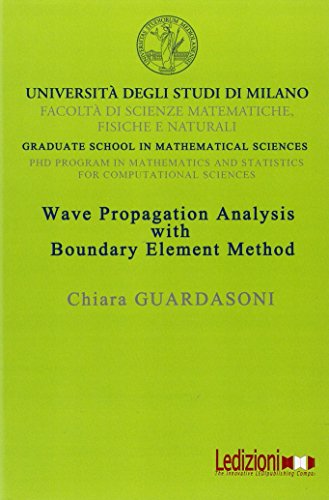
Wave Propagation Analysis with Boundary Element Method
by Chiara Guardasoni
Publisher: Ledizioni LediPublishing 2010
ISBN/ASIN: 8895994159
ISBN-13: 9788895994154
Number of pages: 130
Description:
The aim of this thesis is to developed an efficient procedure for the application of BEM to transient scalar wave propagation problems, investigating the coerciveness property of the related energy functional, avoiding the analysis in the frequency domain.
Download or read it online for free here:
Download link
(3.6MB, PDF)
Similar books
 Engineering Mathematics
Engineering Mathematicsby Charles Proteus Steinmetz - McGraw-Hill
The book brings together and discusses explicitly, with applications, all those branches of mathematics which are of special importance to the electrical engineer. Theoretical knowledge of mathematics must be accompanied by ability to apply it ...
(7915 views)
 Mathematics and Music
Mathematics and Musicby David Wright - Washington University in St. Louis
This book is an investigation of the interrelationships between mathematics and music, reviewing the needed concepts in each subject as they are encountered. Along the way, readers will augment their understanding of both mathematics and music.
(8823 views)
 Fractional Dynamics
Fractional Dynamicsby Carlo Cattani, et al. - De Gruyter Open Ltd
The book is devoted to recent developments in the theory of fractional calculus and its applications. Particular attention is paid to the applicability of this currently popular research field in various branches of pure and applied mathematics.
(7340 views)
 Chebyshev and Fourier Spectral Methods
Chebyshev and Fourier Spectral Methodsby John P. Boyd - Dover Publications
The text focuses on use of spectral methods to solve boundary value, eigenvalue, and time-dependent problems, but also covers Hermite, Laguerre, rational Chebyshev, sinc, and spherical harmonic functions, cardinal functions, etc.
(19603 views)